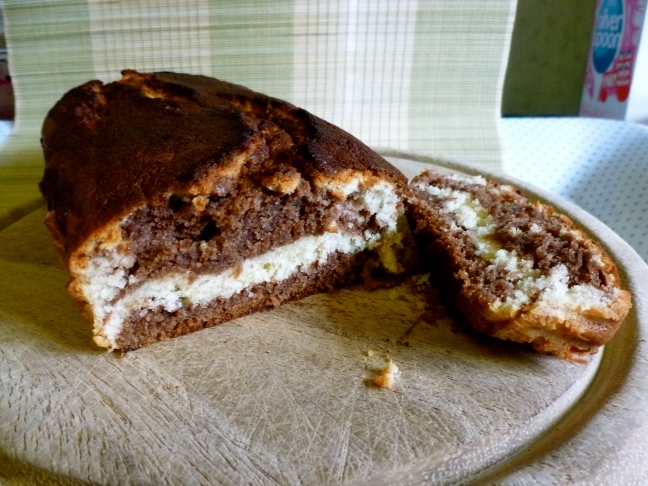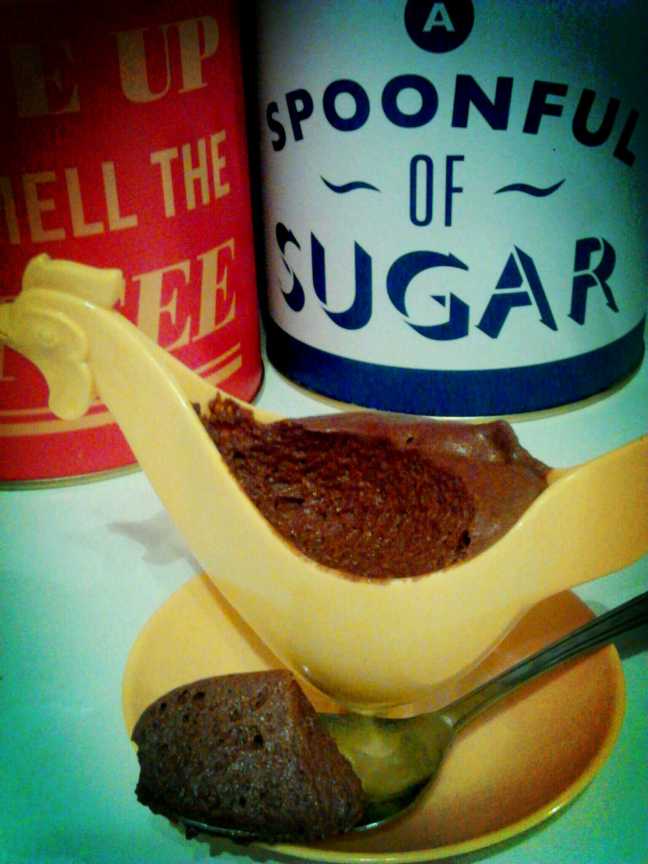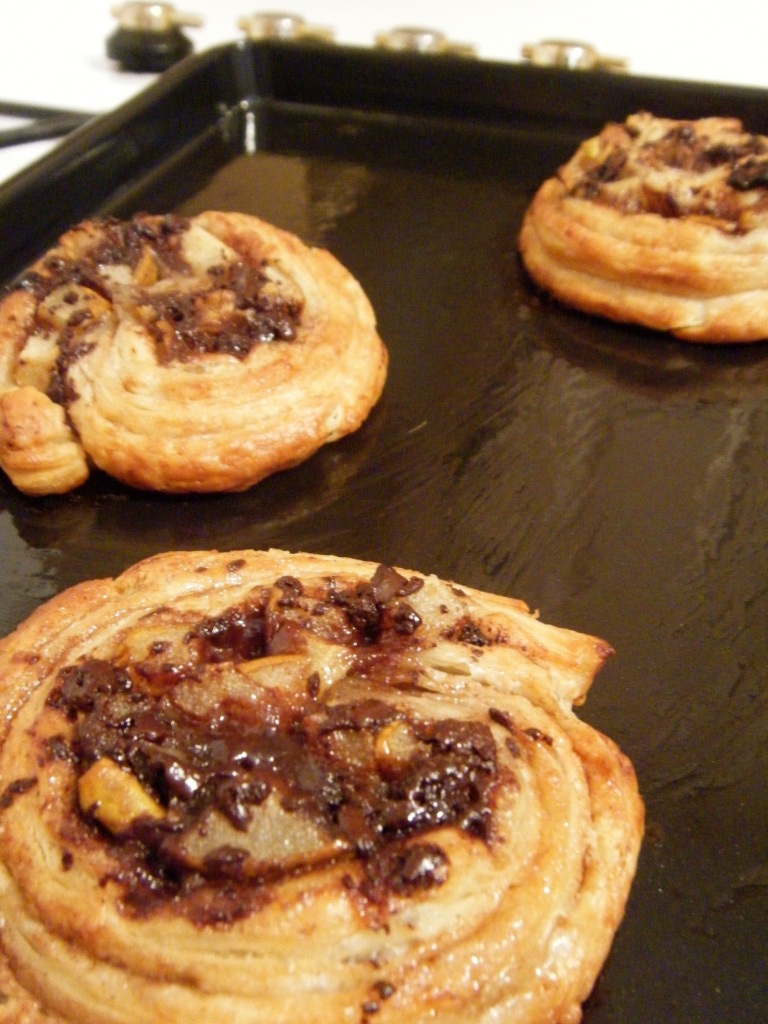
If you’ve ever cut into a cake, and lamented that it was just a single boring colour, then this recipe is for you. Even if you haven’t wishedfor a double-colour cake, just sit there and think about if for a moment. Now imagine that the cake is two colours because one part is chocolate, and another is vanilla. Exactly. Genius, isn’t it?
Ingredients
- 70g butter
- 85g caster sugar
- 115g self-raising flour
- 1 egg, beaten
- 3 tbsp cold milk
- 55g plain chocolate and 1 tsp vanilla extract, to flavour each part of the cake!
- 3 tbsps natural Greek yoghurt
- ½ tsp baking powder
Method
- Preheat the oven to 170 degrees. Line a loaf tin with baking paper or a baking paper case.
- Melt the chocolate using a bain-marie: in a small saucepan, bring water to the boil, then reduce the heat. Place a glass bowl over the water, ensuring that the bottom of the bowl does not touch the water. In the bowl, place the chocolate and pour in the milk. The chocolate and milk melt because of the steam rising from the water in the saucepan.
- Once melted, remove the bowl from the saucepan, and remove the saucepan from the heat.
- Cream together the sugar and butter until light and fluffy. Add the beaten egg, and beat in the Greek yoghurt. Sift the flour and baking powder over the mixture, then fold lightly into the mixture.
- Spoon half the cake mixture into a separate bowl. In one bowl, stir in the melted chocolate. In the other, add the vanilla extract.
- Spoon a layer of the chocolate cake mix into the loaf tin, to form a ‘bottom layer’. Then, add a layer of vanilla mixture on top, swirling lightly with a spoon for a ‘marbled’ effect. Continue to layer the cake mixes until they run out, finishing with vanilla. They don’t have to be even!
- Bake in the oven for 40 – 45 minutes, until well risen and cooked through.
- Cool in the tin for 10 minutes, then turn out onto a cooling rack.




